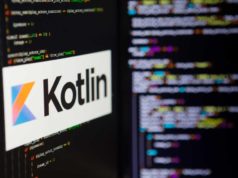ONOS’ “Hummingbird” and OPNFV’s “Colorado” are the most recent efforts by the industry groups to create open SDN and NFV platforms.
The new releases from open-source network virtualization projects keep coming.
A day after the OpenDaylight Foundation unveiled the fifth release of its open software-defined networking (SDN) platform—dubbed “Boron”—the ONOS Project on Sept. 22 introduced the eighth release of its SDN operating system for service providers and enterprises, code-named “Hummingbird” and offering improvements in southbound and northbound protocols and support for incremental SDN on legacy networking devices.
Four days later, the Open Project for NFV (network-functions virtualization)—or OPNFV—rolled out “Colorado,” the group’s third platform release. It takes advantage of the previous two releases while adding feature enhancements around security, IPv6, service-function chaining (SFC), VPN capabilities and support for multiple hardware architectures, according to officials.
“We’re seeing a maturity of process with the Colorado release, reflected by things like achievement of the CII [Core Infrastructure Initiative] Best Practices badge for security and the growing maturity of our testing and DevOps methodology,” Chris Price, chairman of the OPNFV Technical Steering Committee and open-source manager for SDN, cloud and NFV at Ericsson, said in a statement.
The releases illustrate the amount of work being done to create open platforms for network virtualization. SDN and NFV are designed to enable businesses and service providers to build scalable, programmable and agile networks that can meet the demands from rapidly changing data center and IT environments driven by such trends as greater worker mobility, the internet of things (IoT), data analytics, video-based traffic and the cloud.
The technologies remove the control plane and networking tasks, such as load balancing, routing and firewalls, from expensive and complex hardware, and put them into software that is easier to manage and runs on less-expensive industry-standard systems.
OpenDaylight, ONOS and OPNFV are industry consortiums created with the goal of developing open platforms around these technologies that give vendors someone on which to build products. It also reduces the risk to customers of vendor tie-in and gives them more flexibility as they build out their software-defined networks. All three groups are projects under the auspices of the Linux Foundation.
OpenDaylight and ONOS are tackling some of the same issues, which calls into question whether they are helping or hindering efforts toward standardization. In a post on the OpenDaylight blog after ONOS joined the Linux Foundation in October 2015, OpenDaylight Executive Director Neela Jacques noted those concerns but wrote that, ultimately, having both will be beneficial to end users.
“Key users such as AT&T have shared with us that there’s currently no single technology that solves all of their problems,” Jacques wrote. “Some end users and vendor organizations see strong reasons to support both ONOS and OpenDaylight at this time. Just like sibling projects OpenDaylight and OPNFV, hosting both ONOS and OpenDaylight under one umbrella allows us to both continue innovating, but also drives us toward greater synergies and ways to leverage each other.”
Included in the new features for ONOS’ Hummingbird are improved southbound protocols that will enable the ONOS OS to include more support for network devices from Cisco Systems and Arista Networks, new northbound capabilities for improved interoperability, and ways for applications to interact via message bus integration with such technologies as RabbitMQ from Adara and Kafka from Calix.
New features also offer greater scalability capabilities for large networks and new Yang modeling and management capabilities from Huawei Technologies to support incremental adoption of SDN in legacy networks. In addition, Huawei has broadened ONOS commercial support with a new controller, Agile Controller 3.0, based on ONOS.
“Hummingbird is the ideal platform to deliver the full SDN value proposition to service providers,” Bill Snow, vice president of engineering at ON.Lab, said in a statement. “Hummingbird delivers important advancements not only in the core control functions, but also in support of automation and configuration of legacy and OpenFlow-enabled devices to serve the growing set of use cases being tackled by service providers today and into the future.”
With Colorado, OPNFV included enhanced security via the CII Badge for best practices in open-source development and continued prototyping identity federation and management for OpenStack and OpenDaylight, according to officials. In addition, SFC can now run across multiple nodes and includes support for VNF (Virtual Network Functions) Manager installation and for enhanced cloud scenarios, and there is improved IPv6 support in Colorado around IPv6-only deployments and full underlay and overlay support.
Colorado also includes full support for multiple hardware architectures, including x86 and ARM.
“Colorado represents a more robust version of OPNFV’s previous ‘Brahmaputra’ platform,” OPNFV Director Heather Kirksey said in a statement. “The OPNFV community, in close collaboration with other upstream communities, has delivered enhanced capabilities most important to the NFV platform growth and maturity.”






